Leaders Call for Balance in the Force
 |
| “This enemy is not going to go away any time soon.” —Gen. James N. Mattis, USMC, commander, JFCOM, and NATO Supreme Allied Commander Transformation |
With the eighth year of the Global War on Terrorism nearing, military leaders are taking one big collective deep breath and adjusting their thoughts about jointness, leadership and even acquisition. Fueled by more information about the enemy, they are speaking out about the need for balance—between the human element and technology, between fighting the wars today and preparing for future conflicts. They also are expressing what might be called radical ideas about how the armed forces move forward in the future, replacing the adjective asymmetric with irregular or hybrid when describing wars with today’s adversary.
While leaders agree that the day of
Opinions about the value of troops, calls for balance, descriptions of the enemy, appeals for acquisition reform and predictions about the future echoed throughout the halls of the Virginia Beach Convention Center, Virginia, at the Joint Warfighting ’08 conference in June. The event was sponsored by AFCEA International and the U.S. Naval Institute in conjunction with the U.S. Joint Forces Command (JFCOM), and supported by chapters of AFCEA and the National Defense Industrial Association.
On the topic of the terrorists, many of the speakers emphasized the ruthlessness, tenacity and determination of this radical adversary. Gen. James N. Mattis, USMC, commander, JFCOM, and NATO Supreme Allied Commander Transformation, shared his very candid viewpoint. “Having been up against this enemy, I must say, do not patronize this enemy and think [it’s] going to go away any time soon,” he stated. If the terrorists had chemical or nuclear weapons, they would use them, he added.
Irregular warfare is the key problem that the
In the enemy’s eyes, the current fight is a total war that is both a movement and a network, Gen. Mattis explained.
Col. Steve Zotti, USMC, director, Commandant of the Marine Corps Strategic Vision, Marine Corps Combat Development Command, agreed that terrorists are refining their tactics. Nonstate “actors” now have capabilities that once only recognized nations possessed—lethal capabilities—and this trend is increasing, he said. In addition, enemies are learning from each other. They are networked, and it is not a network the
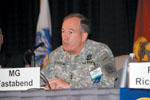 |
| “We have to improve our irregular war capabilities, but we can’t just mass all of our resources to that problem.” —Maj. Gen. David A. Fastabend, USA, director of strategy, plans and policy, G-3/5/7, U.S. Army |
Maj. Gen. John R. Allen, USMC, deputy commanding general, II Marine Expeditionary Force, agreed with this sentiment, pointing out that the challenge of irregular warfare is that it is intellectually demanding. “If you don’t understand the human terrain in general terms in the battlespace you’re involved with, you are simply going to be surprised all of the time,” he said.
To increase understanding, Gen. Mattis would like to see the same high level of modeling and simulation used to train pilots be made available to prepare ground troops. When the infantry goes into the battlespace, he wants it to feel like “déjà vu all over again,” Gen. Mattis said. Lt. Gen. David P. Valcourt,
On the plus side, technical capabilities have advanced to the point that now, improvised explosive device (IED) attacks can be reconstructed within 96 hours and used with an interactive tool for training. “We’re doing some of this, but we need to get more of this training out,” Gen. Valcourt shared.
This focus on the human element of warfare was reiterated throughout the conference. Gen. Valcourt called the all-volunteer force a “national treasure” and said that while the services are granting a number of waivers for a variety of reasons to meet recruiting numbers, the draft is neither the answer nor an option on the table.
But attracting new recruits has a new wrinkle according to service and U.S. Defense Department leaders. The propensity for family members to encourage young adults to join the military is low. Although they believe the armed forces offer many benefits, they are suggesting that their offspring wait awhile before signing up. As a result, recruiters must market not only to potential service members but also to their parents. The down-turn in the economy may help alleviate this problem, they agreed.
Sgt. Maj. Bryan B. Battaglia, USMC, command sergeant major, JFCOM, suggested that another option is to reach out to an even younger audience, speaking to students when they are in middle school or when they begin high school. He also noted that retaining current service members will involve give-and-take on the part of the services. They must tailor their incentives to meet warfighters’ priorities, in some cases with financial rewards but in others with choices about duty stations.
Encouraging young adults to join the service is important because they are the first generation to grow up with many of the technical tools the military has come to rely on. According to Lt. Gen. John R. Wood,
On the leadership side, Gen. Valcourt allowed that a shift in focus is occurring for training. The goal is to develop more well-rounded leaders and units with the requisite skills to adapt and operate effectively anywhere within the spectrum of conflict. Gen. Wood noted that the quest for network centricity has evolved into network-enabled leader centricity.
Many of the speakers touted the importance of improving cooperation among the services to bring the power of the joint force to bear in current and future operations. In speaking about the challenges that the future force faces, Gen. Fastabend talked frankly about the shortcomings of the individual services. For example, land forces are slow and need transportation. “Some may think I’m being rude by talking about these vulnerabilities, but we have to talk about them. The whole point of being joint is joining things that are different, not similar,” he said.
Concurring that it is important to identify shortcomings so they can be overcome, Col. Zotti called for a refocus on expeditionary forces and amphibious missions. “We’ve lost a little bit there,” he stated.
Gen. Valcourt espoused the same viewpoint, and in even stronger terms stated that all of the
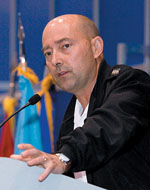 |
| “All of us need to be in the business of thinking, reading, writing and publishing.” —Adm. James G. Stavridis, USN, commander, U.S. Southern Command |
Although his organization concentrates on the joint force, Adm. Richardson also commented about efforts to close the seams between government agencies as well as between the United States’ and other nations’ military forces. He revealed that agencies are creating structures within their respective organizations to define a strategy, and these efforts will survive the transition to a new administration after the inauguration of the new
Maj. Gen. Roy M. Worden, USAF, vice commander, Air Combat Command, offered some additional thoughts as well as questions about the future of combat and the joint force. All of the services are trying to achieve access—then persistence, then precision—to ensure that the joint force can achieve its mission. Dominance across all domains—air, space, sea, land and cyberspace—is crucial, and the cyberdomain will become increasingly important for all the services in the future, as will access, agility and balance across the full spectrum of capabilities, Gen. Worden noted. However, with information a dominant element in the battlespace and around the world, the question remains how to keep soldiers connected so they can bring the full power of knowledge to the fight, he noted.
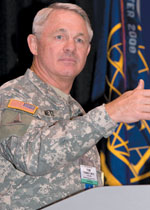 |
| “The IED is a strategic weapon, and it has to be dealt with as a strategic weapon.” —Lt. Gen. Thomas F. Metz, USA, director, Joint IED Defeat Organization |
In addition to the obvious danger to life and limb, it is important to push the enemy in both
Gen. Metz agreed that the modeling and simulation community can be of great service in the battle against IEDs by creating life-like training simulations. “I believe that the soldiers need to feel what it’s going to be like. They need more than just a puff of smoke. They need to understand that if there’s an IED under that dead dog, you and your buddies may be killed or maimed,” he stated.
And with IEDs continuing to wreak havoc with troops, Gen. Mattis called on industry to help find a solution. “One way industry can help the military is to figure out a way to take the IED and turn it against the enemy with premature detonation. There’s got to be a way to do this, but we need a true integrated effort,” the general stated.
But military leaders discussing the acquisition process for purchasing such solutions were very upfront with their comments about the current crisis in defense acquisition. The largest concerns were a shrinking budget, costly technologies and long development times. Most agreed that the end of the supplemental budget may be close at hand, an occurrence that will bring the services closer together but will mean fewer items can be purchased.
The lengthy acquisition process calls for innovative ideas about how to do it, and several speakers had some novel thoughts on this topic. Many mentioned the antiquated process regarding requirements.
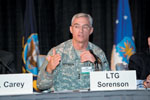 |
| “[In writing equirements,] we go for Nirvana as opposed to trying to figure out what makes sense.” —Lt. Gen. Jeffrey A. Sorenson, USA, chief information officer/G-6, U.S. Army |
James P. Craft, deputy director, command, control, communications and computers (C4) and deputy chief information officer, U.S. Marine Corps, proposed that the services need “a little diversity” in the way they purchase solutions. This could mean buying two similar products to determine which one works better. And information technology can help the services be better equipped, he added. “We need to use the technology to help us manage acquisition the same way Wal-Mart has become a world leader by managing sneakers,” Craft said.
Web Resources
Joint Warfighting Conference ’08: www.afcea.org/events/east/08/intro.asp
Joint Warfighting Conference presentations: www.afcea.org/events/east/08/presentations.asp
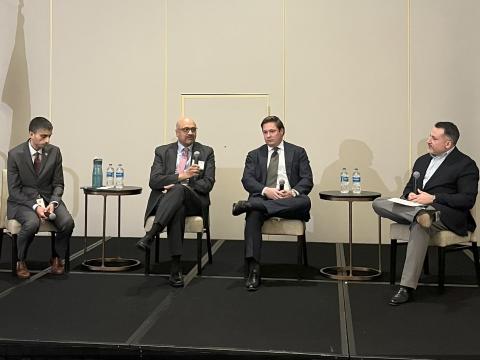
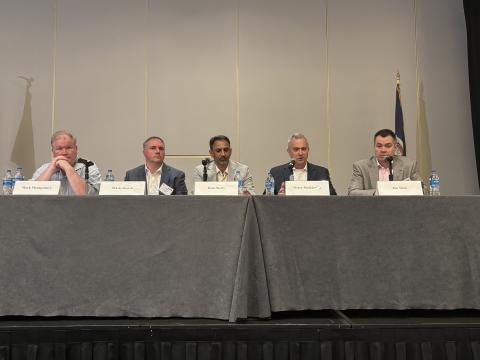
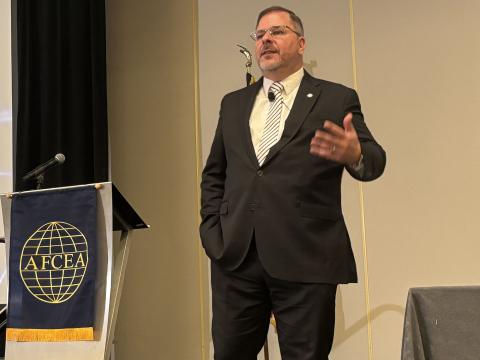
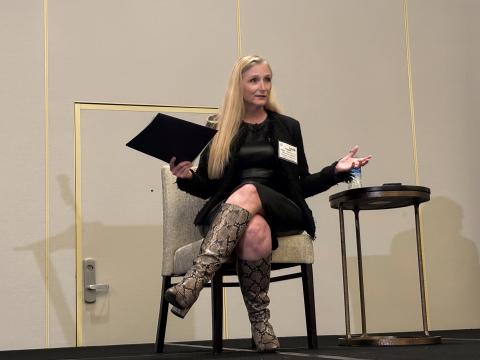
Comments